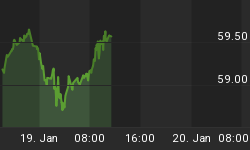The black hole consisting of record consumer debt ($2.52 trillion), falling asset prices, elevated inflation and weakening job and income growth is pulling us inexorably towards recession. As a result, the cacophony for yet more rate cuts has now become deafening. These rate cuts are anticipated to cure all of our ills, from the credit crisis to the Ebola virus. But will the lower interest rates really solve the banking crisis and turn the equity markets around in short order? I thought it would be informative to look at the last two interest rate cycles and compare them to the performance of the equity market.
The monthly average of the Effective Federal Funds rate hit 6.54% at the high point of the interest rate cycle in July of 2000. At that point the S&P500 was trading at 1,509.98. The bottom of that interest rate cycle was in May of 2004 when the funds rate traded at 1%. On May the 14th of '04, the S&P traded at 1,095.70--a decline of 414.28 points or 27.43%.
The interest rate cycle began to turn upwards in June of 2004 when the rate went from 1.03% and peaked at 5.26% in July of 2007. In the beginning of that tightening cycle on 6/15/2004, the S&P traded at 1,132.01 and ended at 1,549.52 on 7/16/2007--an increase of 417.51 points or 36.88%.
In this current cycle, interest rates based on the Effective Fed funds rate began their decline in July 2007 and went from 5.26% to the current level of 2.97% as of 2/15/2008. On July 16th 2007 the S&P was trading at 1,549.52 and as of 2/15/2008 was trading at 1,364.72--a decline of 184.8 points or 11.92%.
During the early stages of interest rate cycles, there exists a negative correlation between the Fed funds rate and equity market returns. History is clear that rate cuts from the Fed work with a lag and their cycles may last for several years. Given that this current cycle is only 7 months long, it may be a couple of years before the stock market can make a cyclical bull move higher. If history is our guide, those calling for a market bottom may be a bit premature. I believe in the long run rate cuts will bring about both nominally higher stock prices and much higher inflation, but patience on behalf of bullish investors may be a prudent course of action at this time.
I discuss this rate cutting nonsense and more in my new podcast, the Mid-Week Reality Check. Five minutes of sanity in an insane financial world!
















